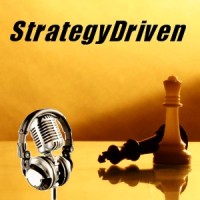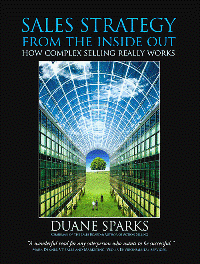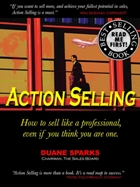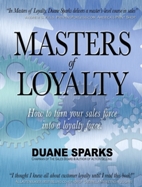MacroScope: Big Picture Perspective Takes Your Business Further

The Big Picture of business is a continuing realignment of current conditions, diced with opportunities. The result will be creative new variations.
Business must review, revise and reinvent itself for the 21st Century. The great mistake is thinking that tomorrow will be the same as today. 90% of all firms are out of business by year 10. 70% of businesses cannot or should not grow any further.
Companies spend so much time rearranging small pieces of their business puzzles that they neglect long-term Strategic Planning and miss potential successes. 98% of companies have no real plan of action and meander toward uncertainty and perils.
Each year, one-third of the U.S. Gross National Product goes toward cleaning up damages caused by companies that failed to take proper actions. The costs of band-aid surgery for problems and make-good work cost business six times that of proper planning, oversight and accountability. 92% of problems stem from poor management decisions.
98% of all organizations – including major corporations, small businesses, public-sector entities and community groups — have no real plan for where they are going or how they will get there. Of the two percent that do, their plans usually consist of sales goals, lists of projects to be completed, trite slogans that pass for mission statements, or marketing hype.
Organizations stop growing because they have failed to make investments for the future. Rather than plan to grow and follow the plan, they rationalize organizational setbacks, excuse poor service or quality, and avoid change, all the while denying the need for change and avoiding any planning. Too often, they rely on what worked for them in the past, on buzzwords, and on incomplete strategies. I’ve also seen businesses in which a paralysis creeps in, keeping them from doing anything at all.
To benefit from change and to grow, each organization may take these actions in order to move forward:
- Understand where you’ve been and where you might go.
- Research trends and spot opportunities.
- Heed messages from the marketplace telling them of changing market conditions, new global business imperatives, new partnering concepts, recognition of new stakeholders, and other changes outside of their influence that may profoundly affect them.
- Put more focus upon running a successful organization.
- Get a qualified business mentor.
- Identify the company’s stakeholders and work with them.
- Predict and benefit from cycles in business.
- Broaden the scope of your services.
- Find creative ways to collaborate with other companies. Collaborations, partnering and joint-venturing are the major business emphasis for economic survival and future growth.
A growth plan or strategic plan is a must for any organization that intends to survive and thrive in today’s rapidly changing business environment. Take a big picture business approach by looking at the whole, then at the parts as they relate to the whole, then at the whole again. Plan to grow, and grow by the plan.
These are the basics of Big Picture business growth strategies:
- Know the business you’re really in. Prioritize the actual reasons why you provide services, what customers want and external influences. Where all three intersect constitutes the Growth Strategy.
- Focus more upon service. Dispel the widely-held expectations of poor customer service. Building relationships is paramount to adding, holding and getting referrals for further business. Retaining 2% of customers from deflecting has a bigger impact on your bottom line than cutting 10% out of operating expenses.
- Plans do not work unless they consider input and practicalities from those who will carry them out. Know the people involved, and develop their leadership abilities. Plans must have commitment and ownership.
- Markets will always seek new and more profitable customer bases. Planning must prepare for crises, profit from change and benchmark the progress. “More of the same” is not a Growth Strategy. A company cannot solely focus inward. Understand forces outside your company that can drastically alter plans and adapt strategies accordingly.
- Evaluate the things that your company really can accomplish. Overcome the “nothing works” cynicism via partnerships and long-range problem solving. It requires more than traditional or short-term measures. He who upsets something should know how to rearrange it. Anyone can poke holes at organizations. The valuable ones know the processes of pro-active change, implementation and benchmarking the achievements.
- Take a holistic approach toward individual and corporate development. Band-aid surgery only perpetuates problems. Focus upon substance, rather than “flash and sizzle.” Success is incrementally attained, and then the yardstick is pushed progressively higher.
Management and leadership activities must be fine-tuned to the company’s Big Picture. Vision is an organization’s way. Corporate culture is the methodology by which they successfully accomplish Vision.
For companies to succeed long-term, the Visioning process begins with forethought, continues with research and culminates in a Strategic Plan, including mission, core values, goals, objectives (per each key results area), tactics to address and accomplish, timeline and benchmarking criteria.
Corporate Visioning goes beyond the Strategic Plan. It sculpts how the organization will progress, its character and spirit, participation of its people and steps that will carry the organization to the next tiers of desired achievement, involvement and quality.
Both the Strategic Plan and the Visioning process must be followed through. This investment is one-sixth that of later performing band-aid surgery on an ailing organization.
Key Messages to Recall and Apply Toward Your Business:
- Understand the Big Picture
- Benefit from Change
- Avoid False Idols and Facades
- Remediate the High Costs of Band-Aid Surgery
- Learning Organizations Are More Successful
- Plan and Benchmark
- Craft and Sustain the Vision
About the Author


 StrategyDriven Podcasts focus on the tools and techniques executives and managers can use to improve their organization’s alignment and accountability to ultimately achieve superior results. These podcasts elaborate on the best practice and warning flag articles on the StrategyDriven website.
StrategyDriven Podcasts focus on the tools and techniques executives and managers can use to improve their organization’s alignment and accountability to ultimately achieve superior results. These podcasts elaborate on the best practice and warning flag articles on the StrategyDriven website.




 Duane Sparks, author of
Duane Sparks, author of  Pete Maulik is Partner and Chief Operating Officer at innovation consultancy Fahrenheit 212. He is instrumental in the development, evolution and actualization of clients’ innovation efforts. His experience includes leading innovation projects in the alcohol, technology, FMCG, software, beauty, financial services and hospitality categories. Pete is responsible for unleashing the potential of the Fahrenheit 212 organization. This includes finding world-class people, giving them a structure in which they can perform at their peak and ensuring Fahrenheit 212 is delivering transformational innovations on every project.
Pete Maulik is Partner and Chief Operating Officer at innovation consultancy Fahrenheit 212. He is instrumental in the development, evolution and actualization of clients’ innovation efforts. His experience includes leading innovation projects in the alcohol, technology, FMCG, software, beauty, financial services and hospitality categories. Pete is responsible for unleashing the potential of the Fahrenheit 212 organization. This includes finding world-class people, giving them a structure in which they can perform at their peak and ensuring Fahrenheit 212 is delivering transformational innovations on every project. How frequently do organizations duplicate effort because the same initiative is unknowingly performed by more than one group? Probably far more often that one might think and certainly more frequently than one would want to admit.
How frequently do organizations duplicate effort because the same initiative is unknowingly performed by more than one group? Probably far more often that one might think and certainly more frequently than one would want to admit. Robert “Waldo” Waldman is a decorated former fighter pilot, sales manager, and professional leadership speaker. His Fortune 500 clients include Hewlett-Packard, Aflac, Marriott, Medtronic, and Nokia. He has been featured on Fox News and BusinessWeek online and in the Atlanta Journal-Constitution and Selling Power. A lieutenant colonel in the Air Force Reserve, Waldman lives in Atlanta where he was ranked one of the Top 40 under 40 Business Leaders in Georgia.
Robert “Waldo” Waldman is a decorated former fighter pilot, sales manager, and professional leadership speaker. His Fortune 500 clients include Hewlett-Packard, Aflac, Marriott, Medtronic, and Nokia. He has been featured on Fox News and BusinessWeek online and in the Atlanta Journal-Constitution and Selling Power. A lieutenant colonel in the Air Force Reserve, Waldman lives in Atlanta where he was ranked one of the Top 40 under 40 Business Leaders in Georgia.